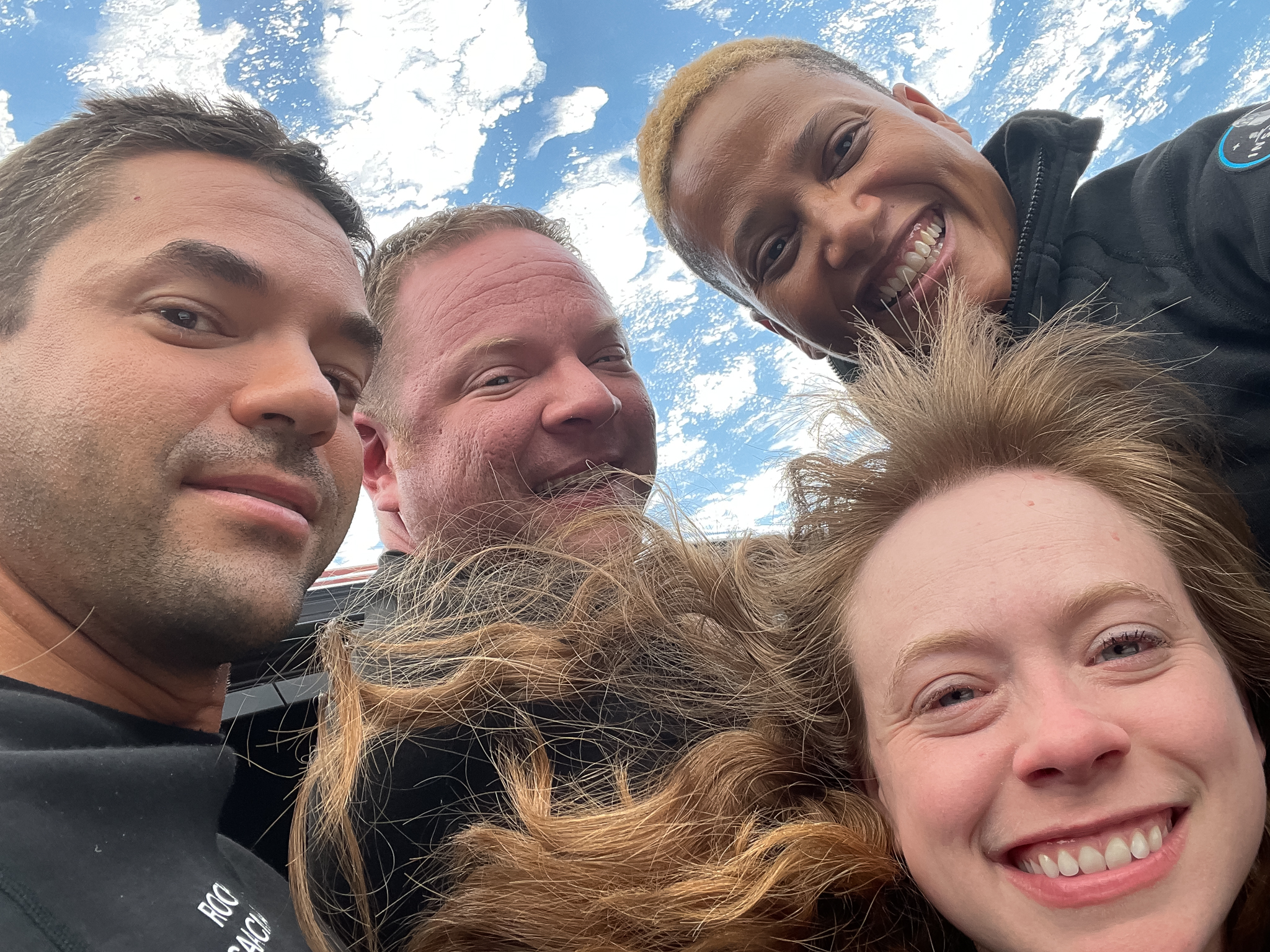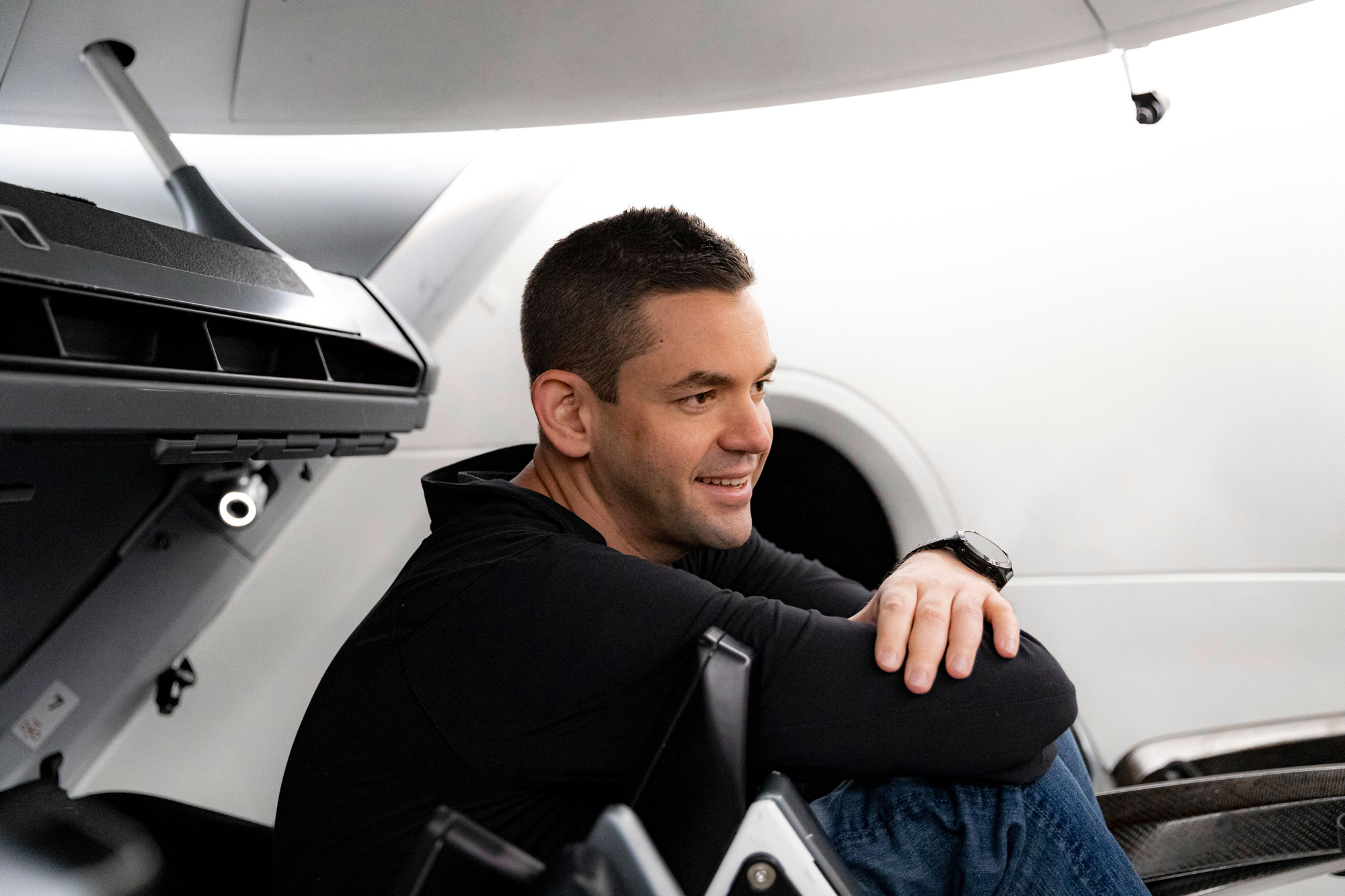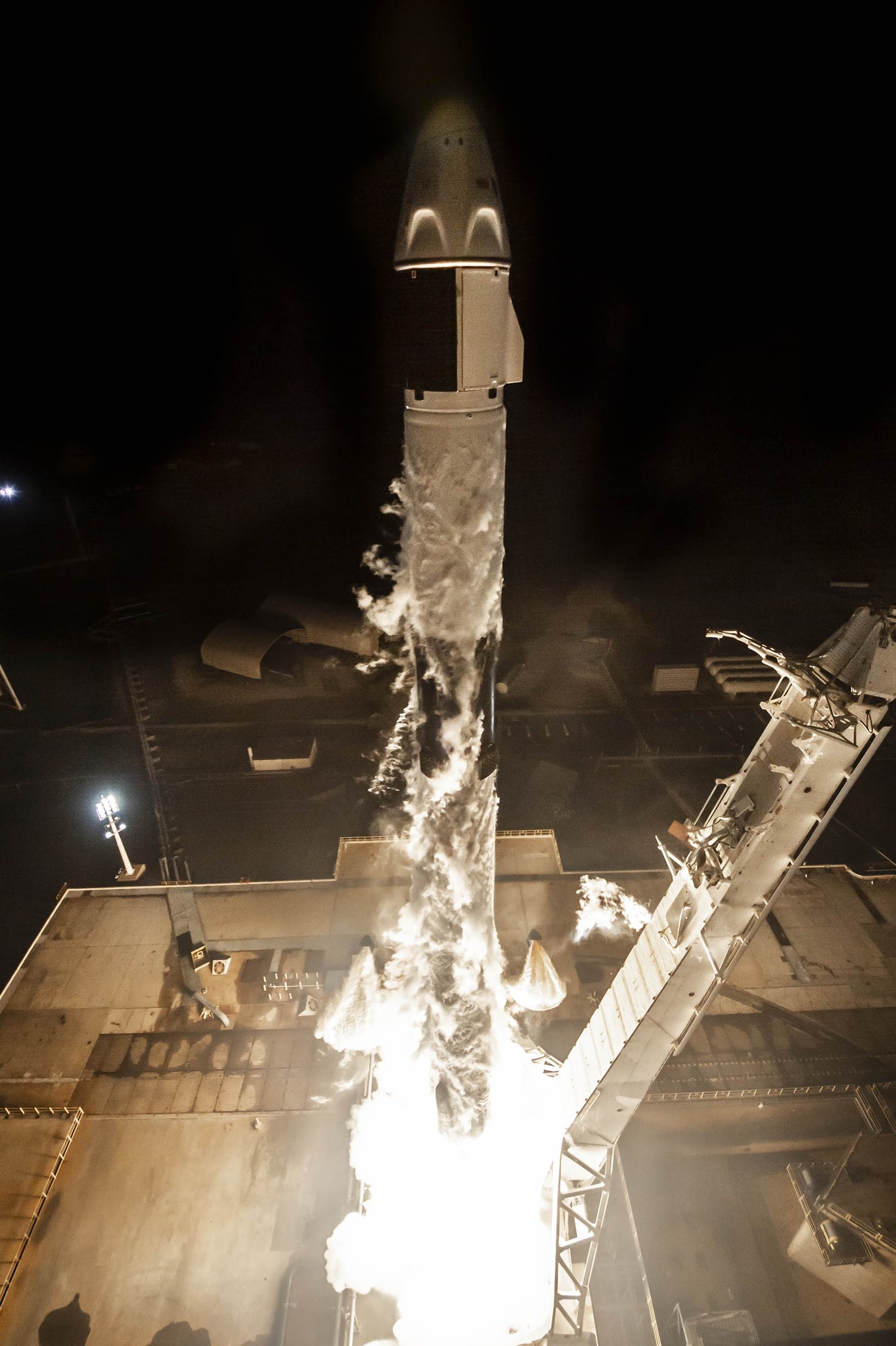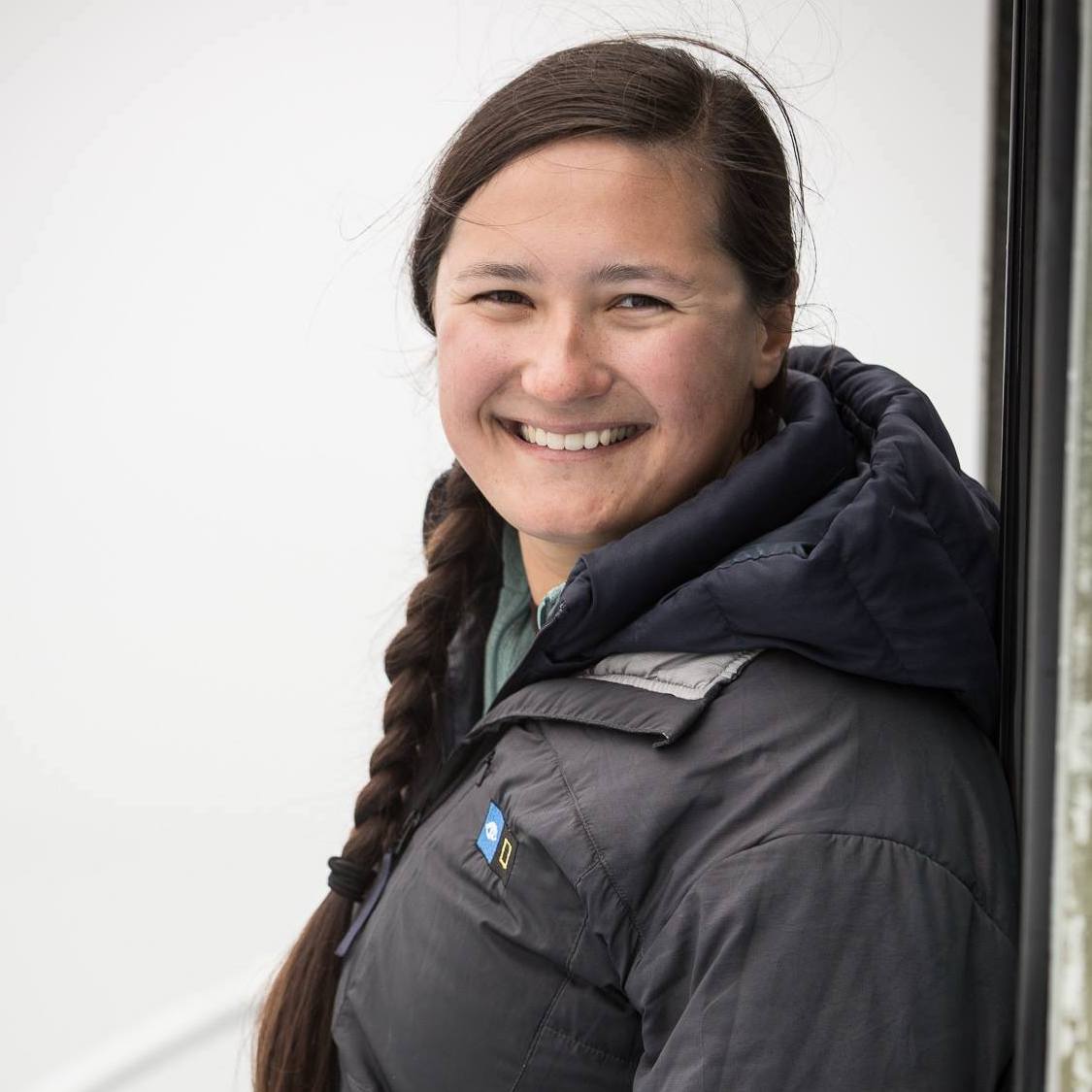Inspiration4: The first all-civilian spaceflight on SpaceX Dragon
The Inspiration4 was Jared Isaacman's privately funded trip to Earth's orbit raised lots of money for a children's research hospital.

The flight, dubbed "Inspiration4," was a privately chartered spaceflight by Billionaire Jared Isaacman, which launched on Sept. 15, 2021. It became the first crewed orbital mission with no professional astronauts on board.
The mission was named to commemorate the four-person crew and their associated "pillars" of support for St. Jude Children's Research Hospital in Memphis, Tennessee: leadership, hope, generosity and prosperity.
Aboard the SpaceX Crew Dragon capsule dubbed Resilience, Isaacman — a self-described space geek who has accrued more than 6,000 hours piloting various aircraft — was the commander of the flight. Joining him were physician assistant Hayley Arcenaux, data engineer Chris Sembroski, and geoscientist and science communication specialist Sian Proctor.
Resilience and its four occupants circled Earth for three days, splashing down off the Florida coast on Sept. 18. The primary purposes of Inspiration4, according to the mission's official website, were to raise awareness and funds for St. Jude and to begin "a new era for human spaceflight and exploration."
Related: Inspiration4: SpaceX's historic private spaceflight in photos
Who was behind Inspiration4?
Inspiration4 was chartered by Jared Isaacman, billionaire CEO and founder of Shift4 Payments, a payment processing company that he established as a 16-year-old and which now handles billions of transactions each year.
"Inspiration4 is the realization of a lifelong dream and a step toward a future in which anyone can venture out and explore the stars," Isaacman said in a statement. He recalls being in kindergarten at Wilson Elementary School in New Jersey looking at high-resolution picture books of the space shuttle, Space.com previously reported.
"I did tell my kindergarten teacher I would go to space someday, and she said she'd be watching," Isaacman recalled.
Isaacman holds several world records, including a speed-around-the-world flight that, according to the New Jersey Local News Service, raised money and awareness for the Make-a-Wish Foundation. In addition, he has flown in more than 100 airshows with the Black Diamond Jet Team, reported Business Wire. Each of those performances was dedicated to some charitable cause.
Inspiration4 was motivated in part by Isaacman's effort to raise more than $200 million for St. Jude Children's Research Hospital, a pediatric cancer research hospital that does not charge the families of children for their treatment. Isaacman pledged $100 million toward the cause out of his own pocket.
"I've been very lucky in life; you really don't get to a position that I'm fortunate enough to be in without the ball bouncing your way a couple times," said Isaacman in an interview with Space.com. "These families [at St. Jude] were dealt horrible hands. They're going through what no one should ever have to go through. It's immense heartache, and the sad part is many of those kids will not grow up to have any of the experiences that I've been lucky enough to have in life. We've just got to do something about that."
How was the crew chosen for Inspiration4?

Isaacman, who commanded the mission, donated the remaining three seats of his four-person flight to sponsor St. Jude.
The first crewmember to join him was Hayley Arceneaux, 29, a physician assistant at St. Jude in Memphis who, as a child, also received treatment for bone cancer from the same organization. She was chosen to join the crew by St. Jude, and according to the New York Times became the first person with a prosthetic body part to go to space, as during her treatment she received metal rods to replace parts of bones in her left leg. She was also one of the youngest people to go to space and the youngest American to do so, edging out pioneering astronaut Sally Ride by just a few years.
Arceneaux served as medical officer for the flight.
Related: Childhood bone cancer survivor joins private Inspiration4 spaceflight on SpaceX rocket
The remaining two seats were given away in two different competitions.
Chris Sembroski, 41, is a data engineer and long-time space enthusiast who once worked as a counselor at Space Camp in Huntsville, Alabama. His seat was up for grabs in a fundraiser sweepstakes meant to support St. Jude, but while Sembroski entered the competition, an unnamed friend actually won. The friend then offered the seat to Sembroski, recalling his avid interest in spaceflight and astronomy, Space.com previously reported. Sembroski served as mission specialist, and according to a press release , helped manage "payload, science experiments, communications to mission control and more."
Proctor, 51, a geology and planetary science professor and science communication specialist, was awarded her seat as winner of the Shift4Shop competition. The contest asked entrants to set up an e-commerce site using a platform owned by Isaacman’s company, Shift4 Payments. As part of the contest, Proctor, 51, also recorded a video sharing her "inspirational entrepreneurial story" and why her business "should be elevated to the stars." Proctor's "Space2Inspire" shop offered postcards and prints of her AfronautSpace art, which she uses to encourage conversations about women of color in the space industry.
Long interested in spaceflight, Proctor was a finalist for the 2009 NASA astronaut selection and has participated in four analog space missions, including a NASA-funded four-month "Mars mission" at the Hawai'i Space Exploration Analog and Simulation (HI-SEAS) Habitat.
Proctor was pilot of the Inspiration4 mission.
How did the Inspiration4 crew train for their trip to space?

While government astronauts typically spend at least two years getting ready for a space station flight, Inspiration4's training timeline was much shorter. Their mission was shorter than most of those undertaken by professional astronauts (just three days in orbit, while many stays on the International Space Station are now six months or longer) and the team had no need for training in space station systems or spacewalks. Still, Isaacman has said in previous reporting from Space.com, training for Inspiration4 drew upon the "NASA-approved curriculum" to get the new astronauts ready for spaceflight.
In April, the Inspiration4 crew completed their first centrifuge training, according to a press release. Among many other physical trials, that training was meant to prepare astronauts for the gravitational forces they were subjected to during launch, and re-entry.
Isaacman also carried on NASA's tradition of putting astronauts into isolated, challenging environments before flight, bringing his crew into the mountains.
"It will get us all super uncomfortable and [in] close quarters and hopefully in snowy conditions, because I definitely want to make sure we all get along really well under those circumstances here on Earth before we go off in space together," he said in a previous interview with Space.com.
Overall, the Inspiration4 crew endured about six months of training, some of which was held at SpaceX headquarters in Los Angeles, leading up to the September 2021 launch.
What was the flight like?

The crew launched on SpaceX's Falcon 9 rocket inside a Dragon capsule, the same type of spacecraft used to fly astronauts Doug Hurley and Bob Behnken to the International Space Station on Demo-2, the first private crewed mission in history.
The capsule itself was a slightly retooled reuse of the Crew Dragon Resilience, the craft that brought Crew-1 astronauts to the International Space Station in November 2020 as part of the first fully operational private crewed mission to the ISS. (Demo-2 was a test flight, as its name suggests.)
Resilience gained a new domed window for Inspiration4, offering the crewmembers 360-degree views. "Probably most 'in space' you could possibly feel by being in a glass dome," tweeted SpaceX founder Elon Musk. The window replaced the equipment that allowed the capsule to dock with the space station on Crew-1, since the Inspiration4 flight remained independently in orbit.
Resilience and its crew circled Earth solo for three days, zooming about 367 miles (590 kilometers) above our planet. That's higher than any Crew Dragon had ever gone before, and significantly higher than the International Space Station, which orbits at an average altitude of 250 miles (400 km).
While in orbit, Isaacman and his colleagues recorded a variety of biometric data and collected samples, in an effort to help scientists better understand how spaceflight affects the human body. The spaceflyers also made some calls down to Earth, including one chat with patients at St. Jude.
The crewmembers spent a lot of time looking out the cupola window at our gorgeous planet. In addition, Sembroski strummed some tunes on the ukelele he brought along and Proctor produced some art, including a drawing of a dragon carrying Crew Dragon to space.
The Inspiration4 crew enjoyed a diverse menu, munching on pizza, Mediterranean lamb, pasta bolognese, sandwiches and a variety of snacks. All the food was cold, a limitation that Musk promised to remedy for future flights.
The billionaire entrepreneur also vowed to improve Crew Dragon's toilet, which featured a great view — it was right under the cupola — but apparently didn't work entirely as planned.
Such hiccups didn't detract significantly from the overall experience, which all four crewmembers said was life-altering.
"Each of us [has] been changed in a way that maybe we didn't expect," Sembroski told NBC News' Lester Holt in an interview that aired Sept. 20. "For me, it was being able to see the Earth in a way that made me realize there is so much to see in person. I need to go and find those places and explore more."
Why SpaceX?

When weighing his space tourism options, Isaacman said, "there was no question it was going to be SpaceX," as Crew Dragon was already flying crewed missions to the International Space Station for NASA. "They're leading the path," he said.
Isaacman said he was proud to fly on a SpaceX Crew Dragon for this mission, because he believes Musk's company "reinvigorated the world's interest in space" following the end of NASA's space shuttle program in 2011. The shuttle ferried hundreds of astronauts to space between 1981 and its 2011 retirement. After that, the next crewed mission to Earth orbit that launched from the United States was SpaceX's Demo-2 mission in May 2020.
In a teleconference announcing Inspiration4, Musk said that he believes the mission is "an important milestone towards enabling access to space for everyone."
Isaacman paid SpaceX an unspecified amount for the flight, but USA Today speculated a cost of "easily at least tens of millions of dollars."
"At first, things are very expensive," Musk noted, "and it's only through missions like this that we're able to bring the costs down over time and make space accessible to all."
What records did the Inspiration4 flight set?
Inspiration4's major claim to fame was to be the "World's First All-Civilian Mission to Space," according to the mission website. What does that mean?
None of the four participants are professional astronauts. In the past, most space travelers have been government-employed and trained civilians or members of the military.
Some tourists have also made their way to space, but previously only under the supervision of professionals associated with a government agency like NASA or its European, Russian or Japanese counterparts, ESA, Roscosmos and JAXA. The crew of Inspiration4 received commercial astronaut training and became the first people to complete an orbital spaceflight with no direct government agency oversight.
Additional resources
- Space.com's Inspiration4 live updates page, which chronicled the mission in detail.
- Inspiration4: SpaceX's historic private spaceflight in photos
- Read more about Isaacman's jet flying and early business success from Fast Company.
- Check out the Inspiration4 website.
Join our Space Forums to keep talking space on the latest missions, night sky and more! And if you have a news tip, correction or comment, let us know at: community@space.com.
Get the Space.com Newsletter
Breaking space news, the latest updates on rocket launches, skywatching events and more!

Vicky Stein is a science writer based in California. She has a bachelor's degree in ecology and evolutionary biology from Dartmouth College and a graduate certificate in science writing from the University of California, Santa Cruz (2018). Afterwards, she worked as a news assistant for PBS NewsHour, and now works as a freelancer covering anything from asteroids to zebras. Follow her most recent work (and most recent pictures of nudibranchs) on Twitter.










